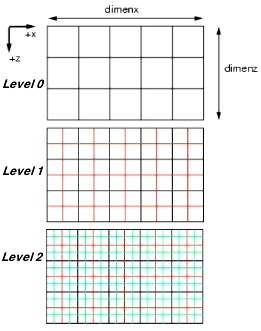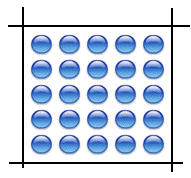| Modelling lithospheric deformation | ||||||||
| ELLIPSIS: A Particle in Cells - Finite Element Method (PIC-FEM) code - Louis Moresi (Monash Univ.) developped Ellipsis from CITCOM a PIC code developed at CalTech. Ellipsis underwent further development at CSIRO then at The University of Sydney (3D version by Richard Albert, Melt function by Craid O'Neill...). • Ellipsis solves 2D and 3D cartesian to spherical fluid mechanic problems with heat transfer, partial melting, phase transition, temperature dependent viscosity, strain localization... It is therefore well equipped to tackle Mantle Convection problems, Plate tectonics processes (subduction), and lithospheric deformation. It can also be used for engineering problems such as slope stability, avalanche, dispersion of polutant, heat transfer... • Ellipsis works with a multigrid solver, which allows quite rapid solutions (but does constrain allowable mesh geometry) • Solid-like materials can be given higher viscosities than fluid-like materials, or material properties can depend on temperature, depth, pressure, strain, strain rates etc. |
||||||||
 |
||||||||
| Level 0 elements, black outline (top, course mesh, 15 elements) Level 1 elements, red and black outlines (middle picture, 60 elements) Level 2 elements, green, red, and black outlines (bottom, finest mesh, 240 elements) Each additional level multiply the total number of cell by 4 and therefore the total number of particles. The number of particles per cell can be calculated for the Ellipsis input parameter "Tracer_rect_density". For instance, the graph below represent a cell with 5 x 5 particles, in this case Tracer_rect_density=5. |
||||||||
 |
||||||||